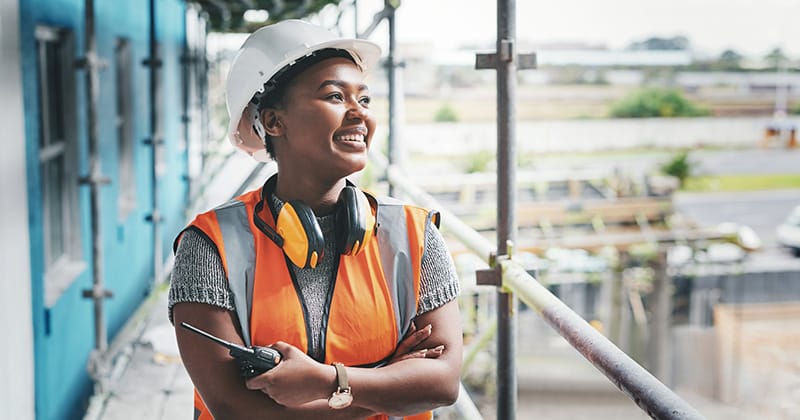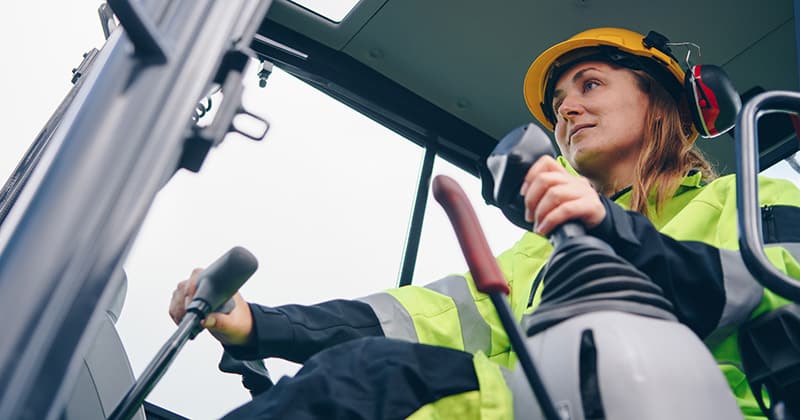Dealing With Labor Shortages: Women and the Construction Industry
The recent labor shortage has led to a rise of women in construction. In this article, we’ll look at the various ways that women working in construction may reduce the labor shortage.

Guest Contributor
There has always been a notable gender gap in the U.S. labor force. Recently, that gap has been narrowing with 57.4% of women joining the workforce.
Although more women continue to join the workforce, the labor shortage in the U.S. continues to grow.
As of October 2022, there are 3 million fewer participants in the American labor force. This is a huge advancement since winter of 2020.
This labor shortage has led to a rise of women entering the construction industry. In 2021, 11% of the construction workforce was made up of women and this number is steadily rising.
In this article, we’ll look at the various ways that women working in construction may reduce the labor shortage. And, in turn, benefit the industry as a whole.
Opening Up to Diversity

Over the last few years, the U.S. has seen massive changes in employment rates.
During the pandemic, about 47 million people quit their jobs. And, according to the Bureau of Labor and Statistics, there were 10.7 million job openings at the end of September 2022.
The construction industry has had over 650,000 job openings this year. Many workers are aging out of their positions, which is steadily increasing the labor shortage. In fact, 1 in 5 construction workers are almost at retirement age.
So, with construction rates only going up, who’s going to work these vacant jobs?
Regardless of what initiated the labor shortage, many industries are struggling to make up for it. The number of available positions far outweighs the number of unemployed people.
This means that people seeking new opportunities have plenty of options to choose from.
One benefit of these changes is that the demand for a more diverse workplace is likely to be answered. The pressure for higher pay and better working conditions has grown.
And, unless these demands are answered, the labor force may not recover.
Not only do workers want to be treated better, they also want equal opportunities without any stigma attached—and that applies to gender too.
The History of Women in Construction
The construction industry has always been predominantly male.
Throughout history, there are records of women working in construction. However, these instances are minimal and carried a lot of stigmas. It’s only recently that women have been breaking ground in more hard-labor-driven work positions.
According to the Bureau of Labor and Statistics, in 1950, women made up about 27% of the workforce. This number has since increased drastically.
Recently, we have also seen more changes in which industries are welcoming women. The demand for laborers and qualified individuals may see these lines blurred in the future.
The construction industry has always promoted a male-dominated paradigm. Male construction workers are the poster for blue-collar workers and the industry itself has always been promoted as masculine.
These barriers have prevented women from joining the construction world. Women are resistant not only because of gender stereotypes, but also because this industry hasn’t been marketed towards them.
More Women Are Working In Construction

Women make up a huge portion of the workforce, and yet so many of those positions have historically been desk jobs. Recently, however, the labor shortage and atmosphere of political change has motivated industry-wide change.
For instance, we’ve seen a massive influx of women into male-dominated industries.
Between 2015 and 2019, the number of women in construction positions grew by 50%. These positions range from management to laborers and civil engineers.
Women working in the construction industry make about 30% more than women working in female-dominated trades.
In fact, while women are earning more in construction, men are tending to earn less compared to other industries. The wage gap in construction is much smaller than in any other industry, at 3.7% compared to the average of 19%.
As such, women who have interest in working in construction may have a lot to gain.
Minneapolis, Minnesota has the most amount of female construction workers in the US. In Minneapolis, women make up 19.1% of the construction labor force. We’re seeing this trend in larger cities, in the south, and on the west coast.
RELATED ARTICLE: 19 Women in Construction Statistics
Diversity Drives Company Success
Diversity and inclusivity drive company success in many ways.
A 2020 study by Mckinsey & Co showed that companies with more gender diversity would outperform in profit than companies with less diversity. In 2019, this study showed an increase in profitability by 25% in companies with a more inclusive demographic.
Not only will a more diverse business generate higher profits, but it also stands to gain a lot from its employees.
Diversifying your workforce increases staff retention, which can save your business a lot of money. People are much more likely to stay on with a job in which equality is promoted.
Additionally, it has been proven that women boost collaboration and bring different perspectives and ways of thinking.
With such a massive labor shortage, not diversifying your workforce will limit your growth and potential for success.
Continuing to Make Space for Gender Diversity In Construction

To decrease the gender gap, construction companies need to rewrite the script of what it takes to work construction. This means unlearning gender bias and changing the narrative.
Not all construction positions are labor intensive and not only men fill these roles. This gender bias can extend into training protocols, equipment and PPE designed for men, and job promotion. It is crucial to create a hiring process that is void of this.
This could look like:
- Involving more women in the hiring process
- Creating a training program specific to women
- Training employees in gender inclusivity
- Job advertisement with inclusive language and equal opportunity promotion
These processes need to go beyond just the construction industry. Our schools and educational programs need to be promoting equal opportunity as well.
We need to be promoting diversity and opportunity for women in all industries, no matter the trade. Hiring women, and more diverse populations in general, is the crucial component to solving the labor shortage.
Selah is a freelance journalist. Her professional passions include psychology, sociology, and regenerative education. When she's not writing, you can find Selah traveling the world, cooking without a recipe, or catching an early morning surf.


